Undergraduate Design Portfolio

Gaines Hayle y Gaines
Hayley
Tectonic Study








 Ember
Canopy
Bloom
Passage
Alice in Wonderland Puncture
Cumulonimbus
Ember
Canopy
Bloom
Passage
Alice in Wonderland Puncture
Cumulonimbus
page 1
page 21
page 23
page 27
page 31








page 35
page 37
page 41

Ember: Center for the Fine and Performing Arts

“Ember”, a center for the fine and performing arts, is an adaptive reuse project integrated with a historically significant site in the heart of Scranton, Pennsylvania: the Iron Furnaces. The Furnaces date back to the middle of the 19th century in the midst of America’s industrial revolution. The structure is massive and made entirely out of stone. It is comprised of four blast furnaces whose fires used to melt iron ore into usable material for railroads, skyscrapers, and ships. The site was vital to the industrial advancements of the United States as a country and added an illustrious and more nuanced dimension to the culture and heritage of Scranton as both a city and community.
“Ember” replaces the fires in The Furnaces’ hearths with an aerial dance performance that includes aerial silks, trapeze, and hoops.
1
The top deck serves as a gathering space where visitors can take part in different types of art-making in specially formalized studios.
Below: aesthetic and material concept collages

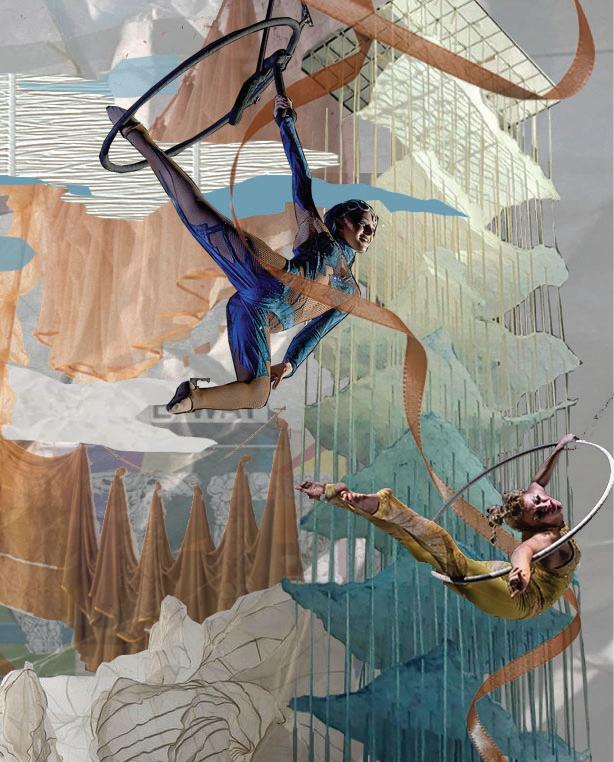
2
Existing
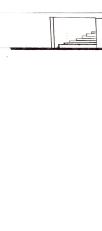
Drawings

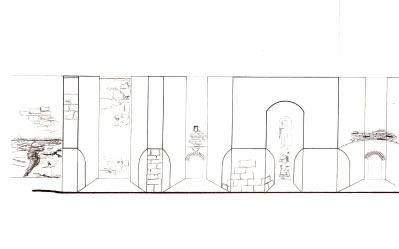


Condition
West Eleva Cross Section Two Cross Section One Plan
3
Elevation/Section Hybrid




tion East Elevation 4
Roofing System
This adaptive reuse project required the implementation of at least three original designed components. One component designed was a retractable roofing system. The overhead coverings imperitive to this concept were inspired by a stack of leaves, specifically in how spaces were created from the leaves’ complex undulating layers as well as the shapes of the leaves themselves. The performing arts center has three sets of these leaves, three sets that are moveable, and one set that is not.


5
Each moveable set has three leaves that rotate out from a single point lofted upon a structural column. When “closed” these leaves hover over the studio space and house the building’s HVAC and electrical systems. When “open”, they cover the amphitheater, a second component of the project, to provide shade and shelter from the elements for a more comfortable experience when viewing performances.
Below: original inspiration artifact and first iterative diagrams exploring leaf movement, shape, and functionality
Following page: second iterative diagram of leaf movement and shape, leaf detail diagram, leaves “closed” in physical model

6











































7













































8
Inner Glow Theater






“The Inner Glow Theater”, the project’s second component, is a parasitic structure grafted to the eastern façade of The Furnaces. Originally tasked with designing stairs to transport occupants from The Furnaces’ top deck to ground level, “Inner Glow” transformed into a theater-like space where the performances in the hearths and art-centered lectures on a lower stage can be viewed and listened to from an interior condition. The component experiments with the manifestations of light as it passes through and interacts with different materials, colors,
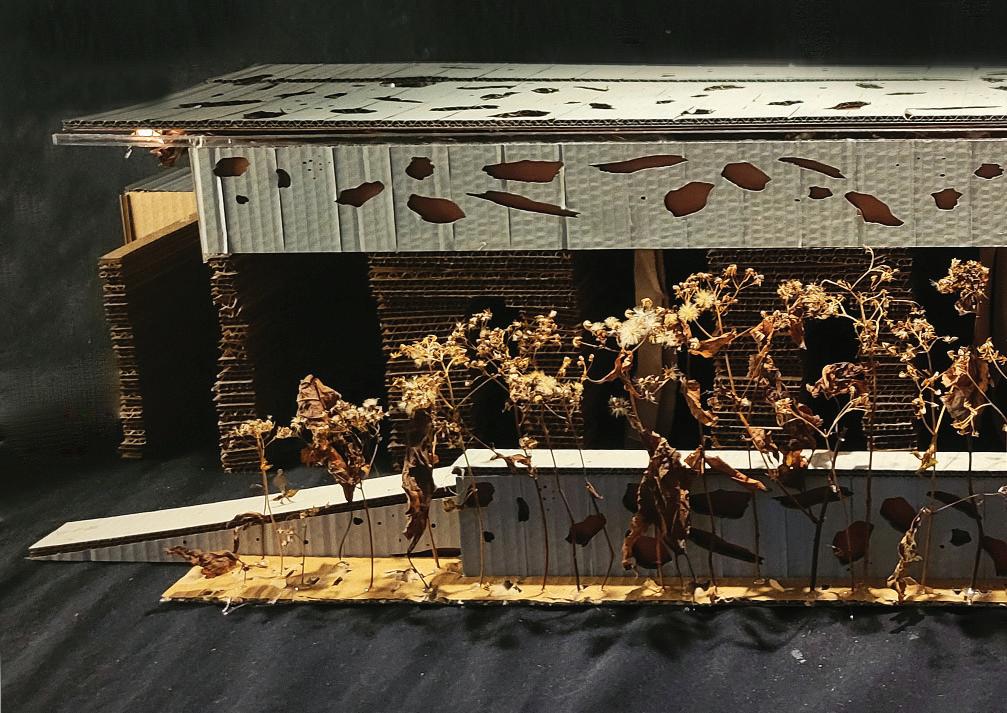
9
and perforations. Perforated metal sheets separate the layers of movement throughout the structure. The contrast between the warmth of the copper-colored steel within and the neutral aluminum sheets without will create a glowing effect when light is added. Light is also layered through the variations in the patterning of shadows through the metal encasement’s perforations.






10
Below: theater in physical model (exterior and interior perspectives)
An amphitheater was the design’s third component. This threetiered structure provides seating to view the aerial dance performances taking place within the Furnaces from an external perspective. The platforms comprising each tier are wide enough for large groups of people, tables, and picnic blankets,





11
Amphitheater
catering to a wide variety of viewing experiences and intensifying the center’s warm sense of a shared community. The first and second tiers are also fully accessible by ramps on either side.





12
Below: amphitheater in physical model
Studio Space



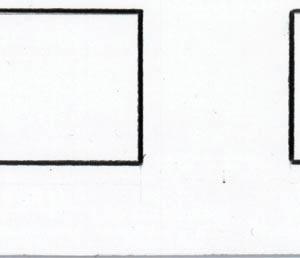



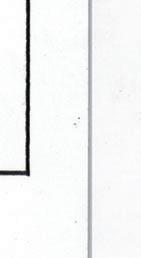


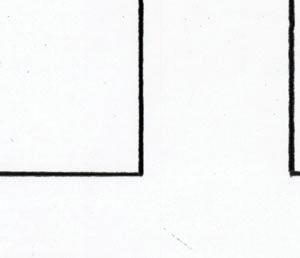






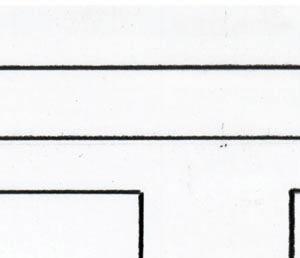
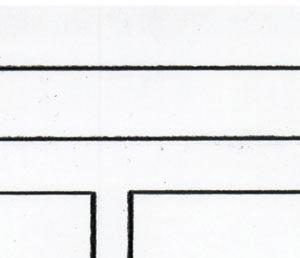











































The studio space on The Furnaces’ top deck represents an additional fourth component. Besides space for restrooms and storage, the deck, now completely enclosed, houses space and needed accessories for a wide variety of art-making, some of which include pottery and ceramics, painting, drawing, beading,and other small crafts. Visitors can either use the studio space independently or make a project in a group setting by following a tutorial by a trained artist. On the eastern side, the studio features an extension off of The Furnaces’ original deck that acts as a makerspace with larger tables and a space in the middle for large-scale community builds or art installations.

13
There is also a materials library of locally collected found objects to promote and drive creativity, sustainability, and adaptive reuse projects of a smaller scale. The aerial silks and the performances utilizing them, represented in orange in plan, can be viewed from the studio spaces as the art-making is taking place to cohesively blend both programs.
Below: studio floor plans and reflected ceiling plan






















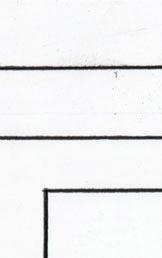
















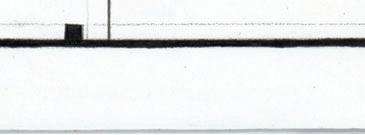
















Following pages: interior model perspectives from physical model





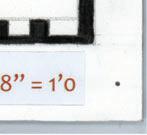


Plan One
PlanTwo Reflected Ceiling Plan 14
Floor
Floor

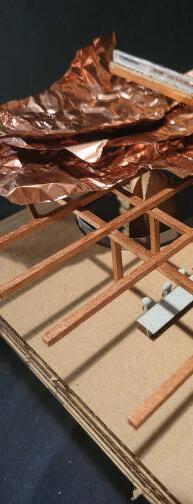





15

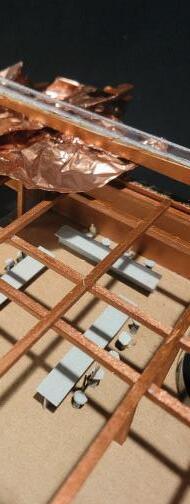
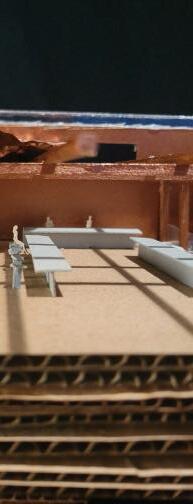




16
Perforations

































































































































































































The technical diagrams highlight the historical analysis done on the host structure through the representation of materiality and perforations. The aluminum paneling of the aerial plan and south elevation most clearly exhibits how the perforations in that particular material are modeled after the shape of iron ore. The perforations in the rustcolored Corten Steel panels, shown in the longitudinal sections, are based off of the shape of liquidized iron as it is being smelted. The north longitudinal section includes a wall made from Corten Steel that, instead of being perforated, is etched in a pattern implicative of what iron ore looks like when it is just beginning to melt. The coloring of the metal panels and the designs that have either been cut or etched into them honor the past life of The Iron Furnaces by basing themselves off of The Furnaces’ original programming of smelting iron.





























Materiality




































































Corten Steel was chosen for the interior metal panels because its fiery warmth reflects the activity and life happening within the new studio and performing arts center. Its weathering properties also, as previously mentioned, retain memory as the host structure





does. In addition, steel was important to the history of The Furnaces, as it was one of the products of smelting iron and a major contribution to the culture and prosperity the Scranton community. Aluminum was chosen as the material for Ember’s exterior metal panels because the material’s coloring matches that of The Furnaces’ existing facade. The colors were matched to respect the original appearance of the host structure and to maintain the awe-inspiring effect of such a massive yet cohesive stone structure. The aluminum’s neutrality will also direct all attention to the hearth of The Furnaces where the fires of the past have been replaced with the aerial silks as a new fire whose embers will touch the lives of all who visit and cement the site as a place for coalescing in color and living in light






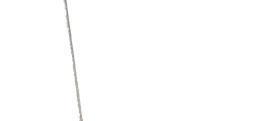
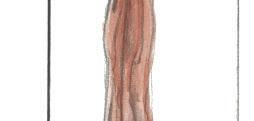



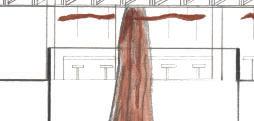




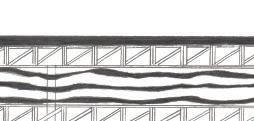










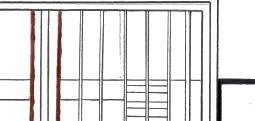
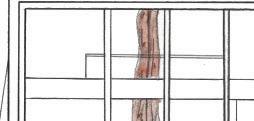

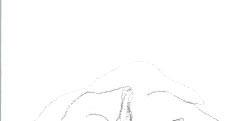


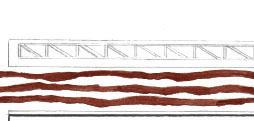
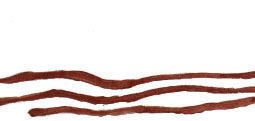
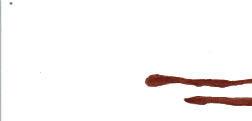 Left: aerial plan, south elevation, south longitudinal section, north longitudinal section
Below: east elevation and cross section with leaves “open” Following pages: detail shots of physical model
Left: aerial plan, south elevation, south longitudinal section, north longitudinal section
Below: east elevation and cross section with leaves “open” Following pages: detail shots of physical model
18



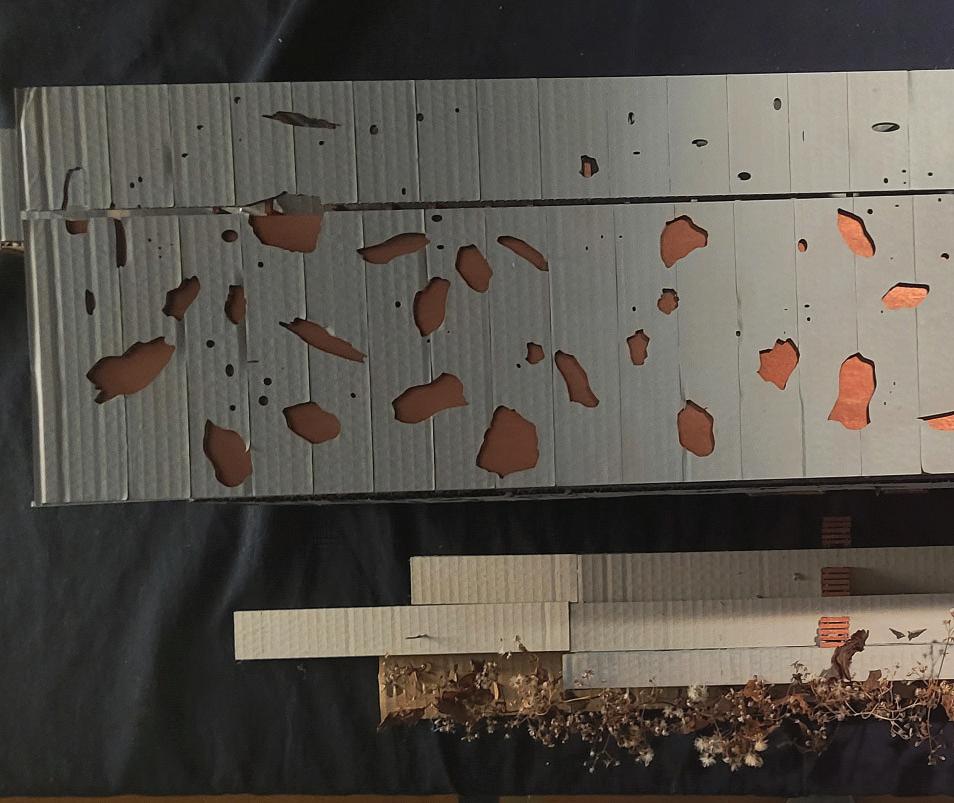
19



20
Tectonic Study
The goal of this project was to gain an understanding on how planes, frames, and masses interact to create space. This relationship was explored through sequential iterations of physical models in which each iteration added a new tectonic element. This final iteration, through both the model and technical drawings, represents comprehension of how all three tectonic elements can be manipulated and integrated to create primary, secondary, and tertiary spaces.



Following Page: axon, aerial plan and floor plan, aerial plan collage, model photos


 Elevation 1Section 1
Section 2
Section 3
Elevation 2
Cross Section
Elevation 1Section 1
Section 2
Section 3
Elevation 2
Cross Section
21


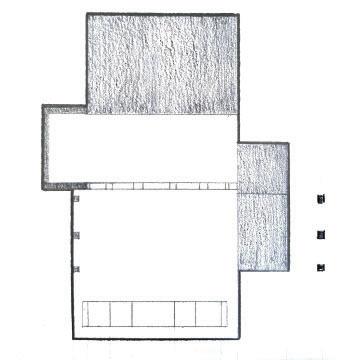





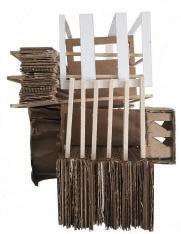

22
Canopy
Based upon a tessellated pattern made into a physical paper node, “Canopy” demonstrates how two-dimensional realities can be transformed into three-dimensional space. The elevation and sections of the initial canopy, made entirely out of the paper nodes, were then represented through several iterations of relief models. These relief models were ultlimately combined into one physical model that focused on spaces for gathering, passage from one space to another, connecting elements to create a cohesive design, and intentional placement of the model in its site so as to make use of potential surrounding topography.


Below: canopy plan, model photos

23















Relief Model 1, Iteration 1 Relief Model 2, Iteration 1Relief Model 3, Iteration 1 Relief Model 1, Iteration 2 Relief Model 2, Iteration 2Relief Model 3, Iteration 2 Relief Model 4, Iteration 2Relief Model 5, Iteration 2Relief Model 6, Iteration 2 Combined Relief Model 1, Iteration 1 Combined Relief Model 2, Iteration 1 Combined Relief Model 3, Iteration 1 Combined Relief Model 1, Iteration 1Combined Relief Model 2, Iteration 1Combined Relief Model 3, Iteration 1
Below: final model rendering Right (in order): elevation, section 1, section 2, section 3, section 4, section 5, section 6, section 7, section 8, circulation diagram indicating movement and gathering










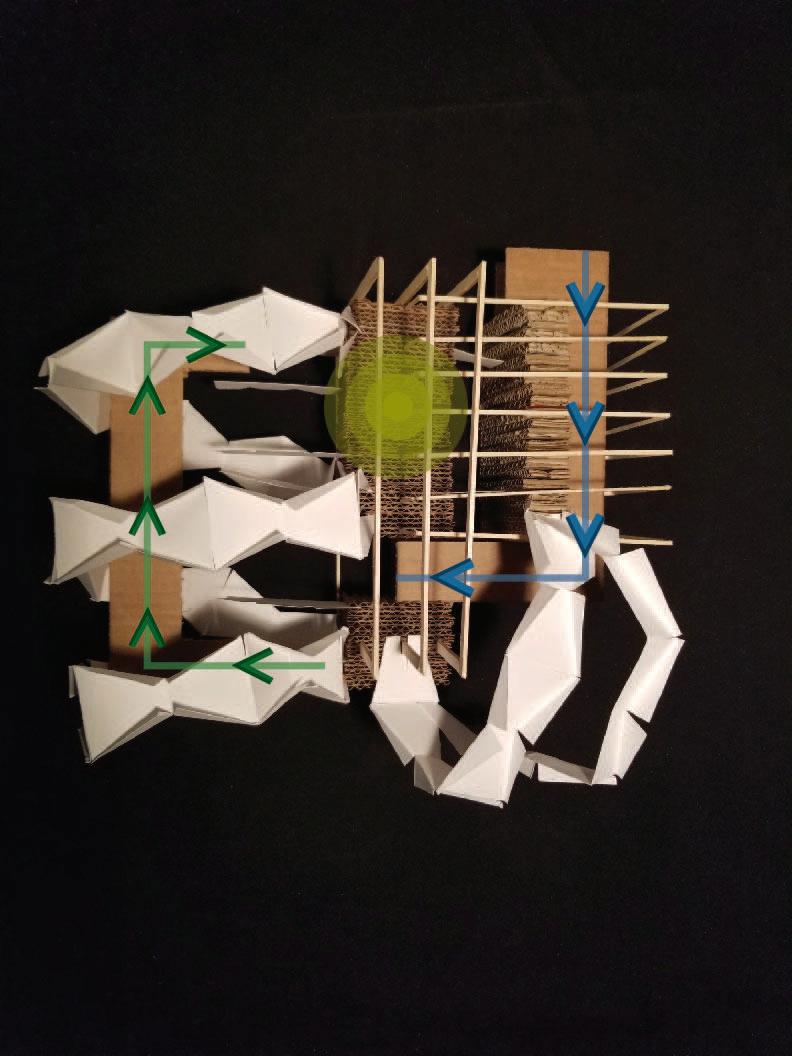
26
Cumulonimbus
“Cumulonimbus” started with the abstract interpretation of original long-exposure images as potential light fixture designs. The fixture’s form, suspension techniques, functional operations, and the path of the prescribed LED strip were all taken into consideration. The final design mimics a thunder cloud. Its sporadic form of plastic wrap is supported by flat beading wire. As well as being a study in form, it explores the impact of the clear plastic material on the quality of light as it is reflected off of and shone through a clear yet dynamic surface.
Below: inspiration photos, preliminary sketches


Following pages: light fixture photos

27


28


Bloom
“Bloom” experiments with how a single tectonic element, in this case frames, can be used to craft a space by shading, filtering, and screening light. Trace paper was used in various forms to add to this exploration. The trace paper, depending on the instance utilized, either screens the light, thereby creating a sense of closure and privacy, or casts unique patterns of shadows on the space below. The shadows within the trace paper itself add a greater depth and texture, something that is also seen in “Bloom’s” exterior plane, made from basswood, as the layered frame pieces enhance texture and add a vertical directionality.
Left and below: combined model
Below: first iteration model




Right:
Right: combined model
Following page: cross section
final iteration model, plan, section
31








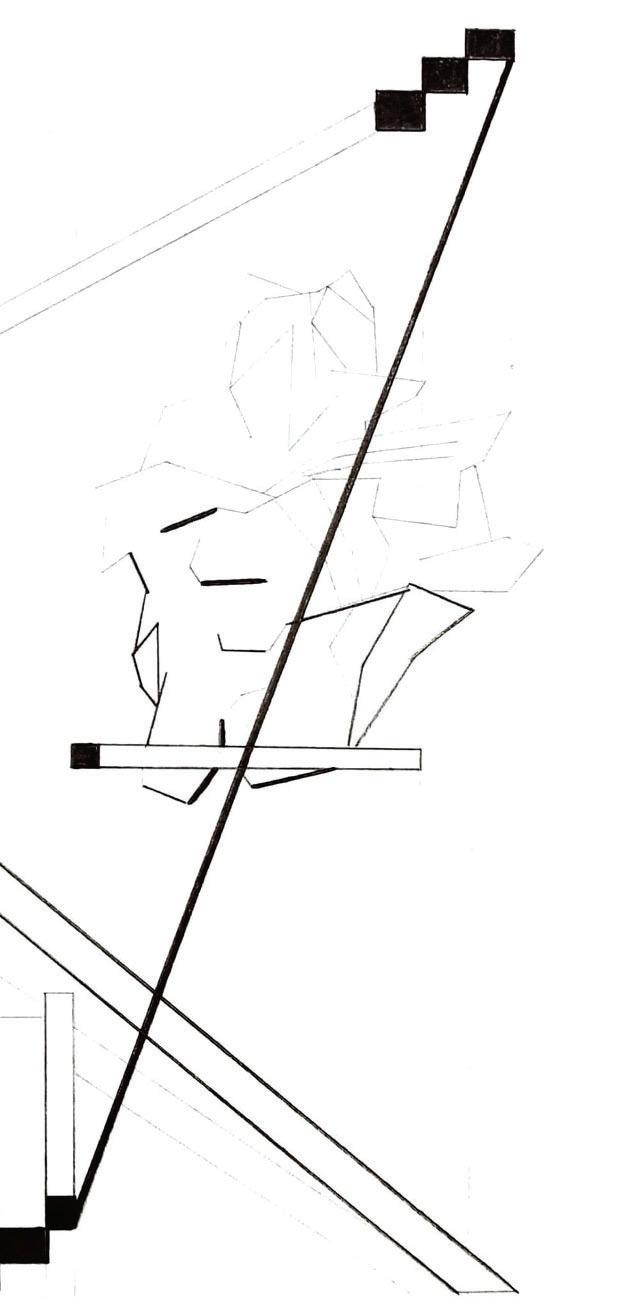
Passage

“Passage”, formed with the inclusion of two prescribed wooden masses, emphasizes the transition from one space to another and the experiences that happen within that moment. More specifically, the spatial conditions focused on were “through” represented in indigo, “within” in cyan, “around” in green, “between” in salmon, and “beyond” in magenta. Additional tectonics and materials were added to compliment “Passage’s” function and to enrich it as a distinct habitable space.

The mass corners emphasized the transition from one space to another and the experiences these corners were “through”, “within”, “around”, “between”, and “beyond”.

Below (white background): first iteration model



Below and following page (black background): final iteration model


35


36
Alice in Wonderland
“Alice in Wonderland” is the manifestation of a two-dimensional turned three-dimensional diagrammatic study of Alice’s experiences falling down the rabbit hole. The staircase was one of the main focuses of this study. It was important to understand human scale, the impact of tectonics on spatial experience, and the relevance of staircases as more than just methods of ascent or descent. From top to bottom, the model includes five station points, each made for a different activity whether that is looking out, gathering, exploring, sitting, or taking shelter. “Alice in Wonderland” experiments with how different tectonic compositions manipulate movement and prompt certain actions to take place.









37
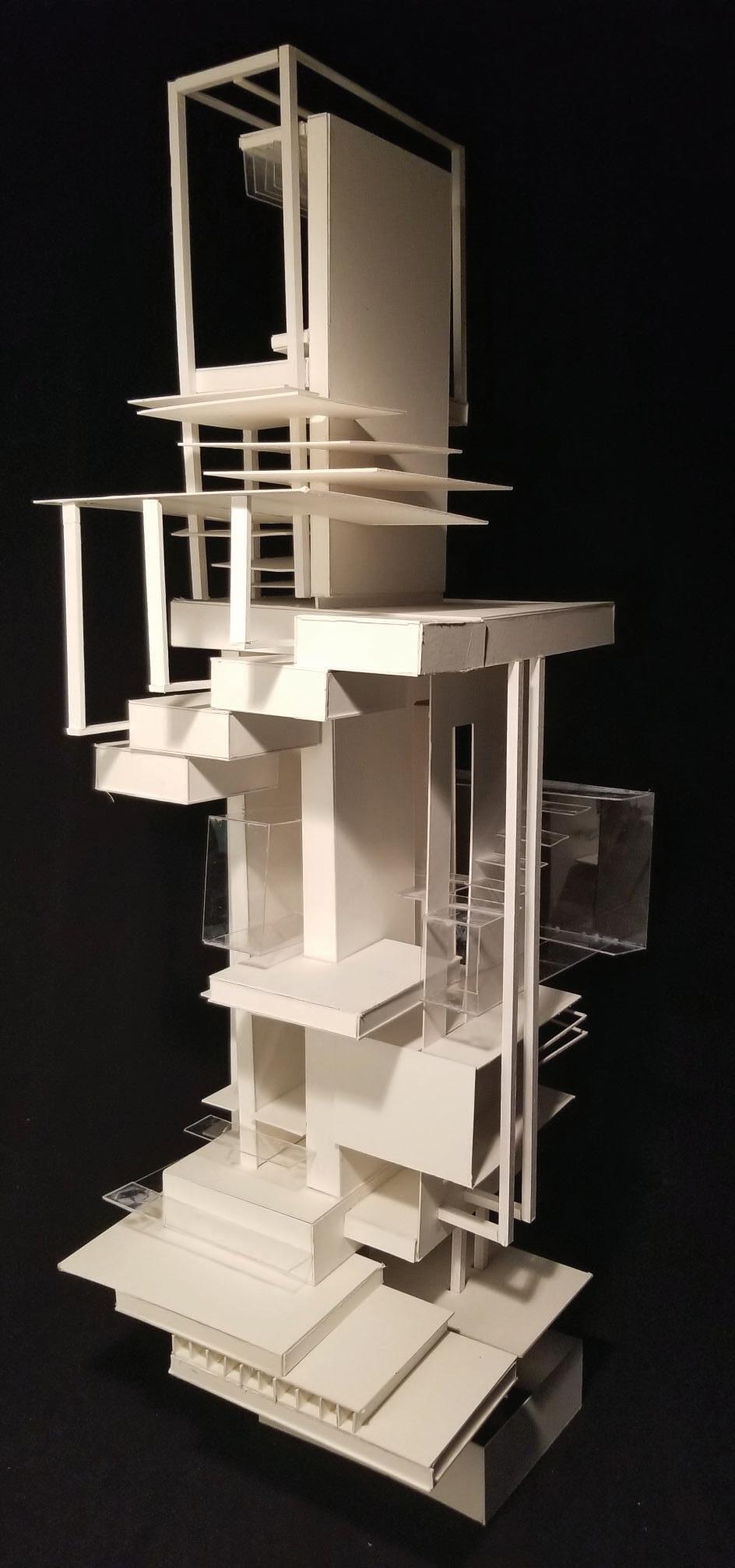
38







First Operation Floor Plan Third Operation Floor Plan Fourth Operation Floor Plan 39 First Operation Floor Plan Third Operation Floor Plan Fourth Operation Floor Plan



40
Puncture
A puncture is a breach of one material into another, causing a disruption in the form of the original mass. This definition, along with the forms developed in “Alice in Wonderland”, was used as a driver in the design for an intervention to an abutment of the Queensboro Bridge on



41
Left: longitudinal section and sections
Roosevelt Island. Both horizontal and vertical punctures were used to articulate space and create distinct experiences within a visiting center that would bring occupants from the top of the bridge to ground level. N
Below: materiality map, diagrammatic site analysis, site plan N .024” = 1’ 024” = 1’ N

43
First Station Point
Third Station Point
Fourth Station Point
Left: axon


Following pages: model photos

44






45










46
The horizontal and vertical punctures of the site intervention are both made from aluminum, but the coatings on this aluminum are what differentiate the two. The Cornell Tech campus is one of the intervention’s main focuses on Roosevelt Island. On campus is the Morphosis building, a building whose facade appears to shift from a copper-gold color to a blue-green one as one walks in front of it. Its facade is made from aluminum with an iridescent copper patina, a coating intentionally chosen for its blue-green hues as a reflection of the East River and for its copper-yellow tones resembling those of the Queensboro Bridge. For the site intervention, the blue-green hue of the horizontal punctures mimics the horizontal condition of the East River while the vertical nature of the copper colored punctures is reminiscent of the Queensboro Bridge’s upright abutments.

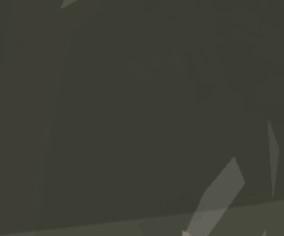








The intervention’s staircases tie the entire composition both to itself and to Roosevelt Island as a whole. Nature is vital to every station point within the intervention. East Main Street connects a bike trail along the East River to Southpoint Park at the other end of the island, two locations that are made to appreciate the island’s natural beauty.








47
Just past the park are the relics of the smallpox hospital, the remains of which are being overridden by nature. The Four Freedoms Memorial is topped with a grove of trees, and it is bordered by the river at its end. There is a grass field and an abundance of vegetation on the Cornell Tech campus, and the river itself is essentially organic. For these reasons, an earthy material native to the island was chosen for the staircases. SavATree is a group that collected inventory on all of the trees within Southpoint Park and categorized whether they were dead or alive. A dead tree was chosen for the intervention because through the intervention’s construction, the tree could be brought back to life. More specifically, the boxelder tree was chosen for the type of wood that would be used. The boxelder bug, named for the fact that they feed and lay eggs on the boxelder tree, is oftentimes found in people’s homes when there is a nearby food source. they invade these homes as a necessity; they depend on the food that they find there. But they are also a nuissance. They are a disruption, much like how the intervention itself is a disruption in the form of the abutment while also clinging to it in the hopes of sustaining its existence.
















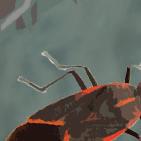








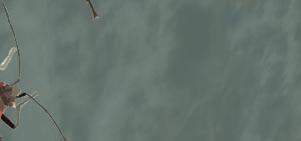






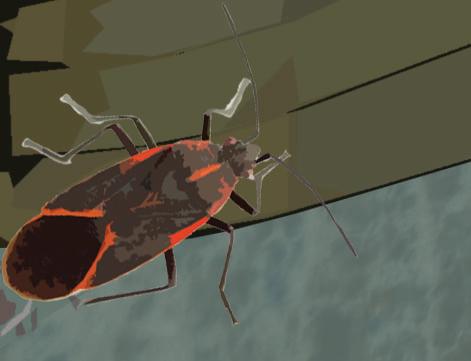


























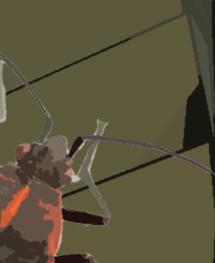







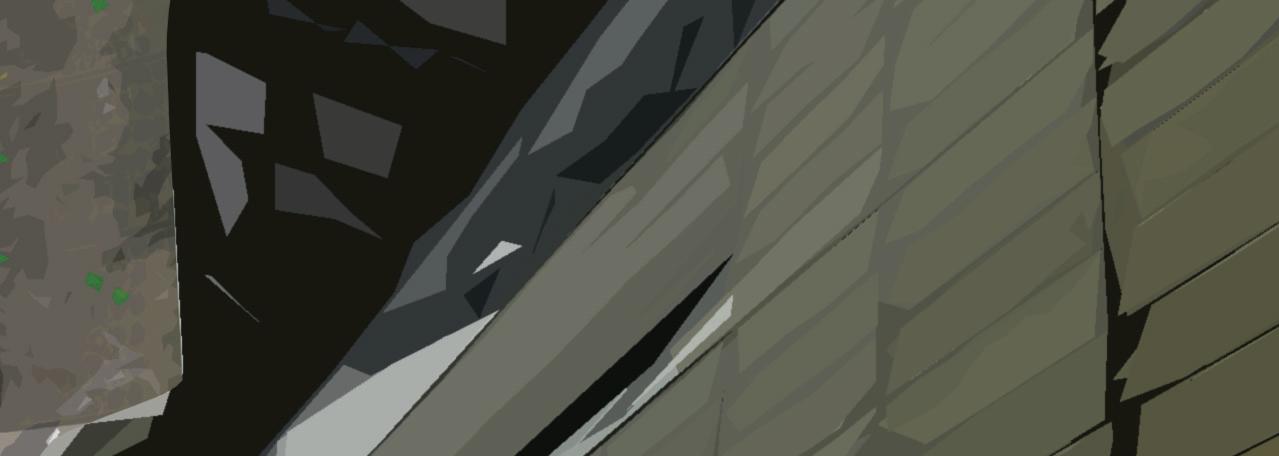

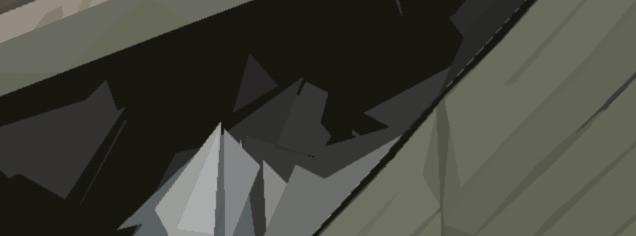


48
Below: material collage









 Ember
Canopy
Bloom
Passage
Alice in Wonderland Puncture
Cumulonimbus
Ember
Canopy
Bloom
Passage
Alice in Wonderland Puncture
Cumulonimbus





























































































































































































































































































































































































































 Left: aerial plan, south elevation, south longitudinal section, north longitudinal section
Below: east elevation and cross section with leaves “open” Following pages: detail shots of physical model
Left: aerial plan, south elevation, south longitudinal section, north longitudinal section
Below: east elevation and cross section with leaves “open” Following pages: detail shots of physical model












 Elevation 1Section 1
Section 2
Section 3
Elevation 2
Cross Section
Elevation 1Section 1
Section 2
Section 3
Elevation 2
Cross Section




















































































































































































